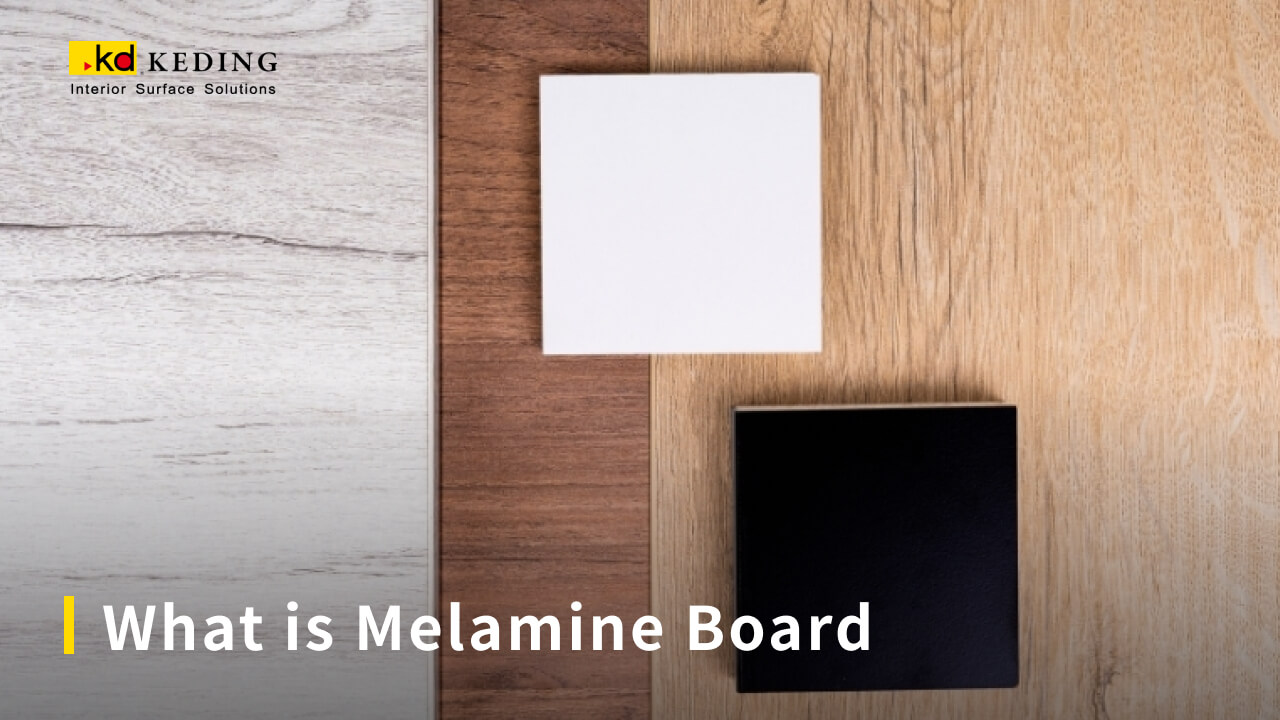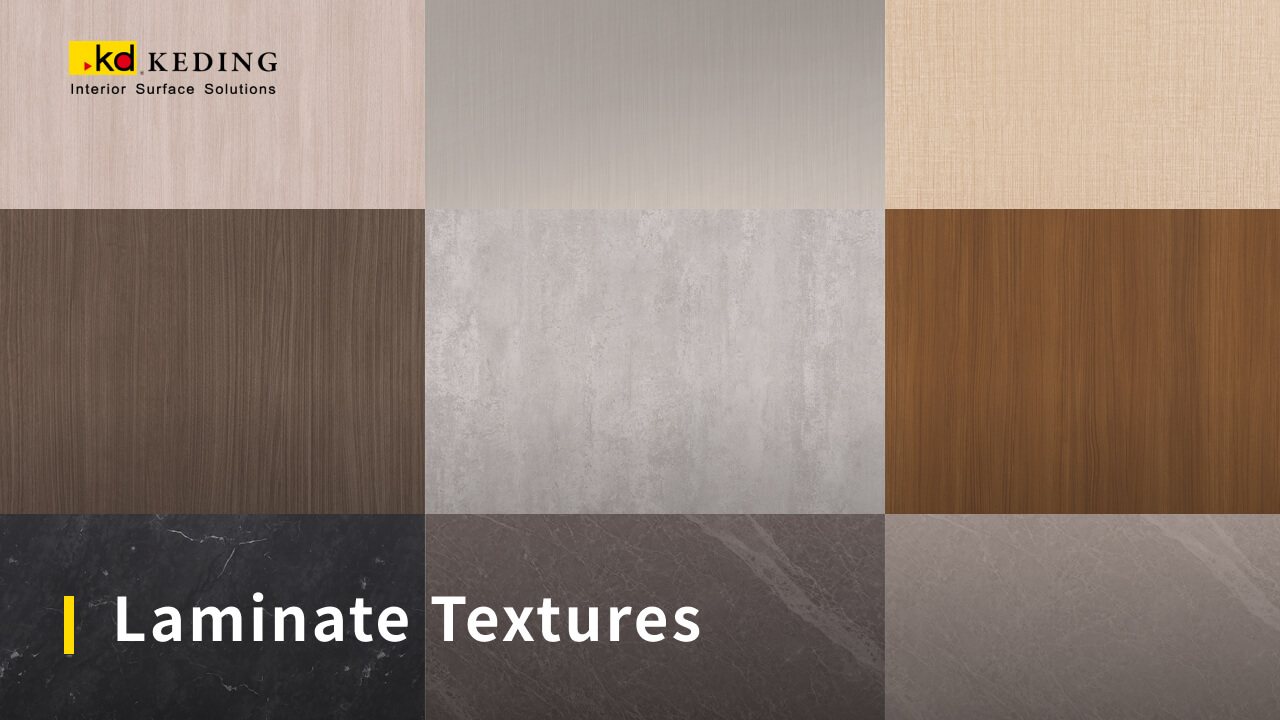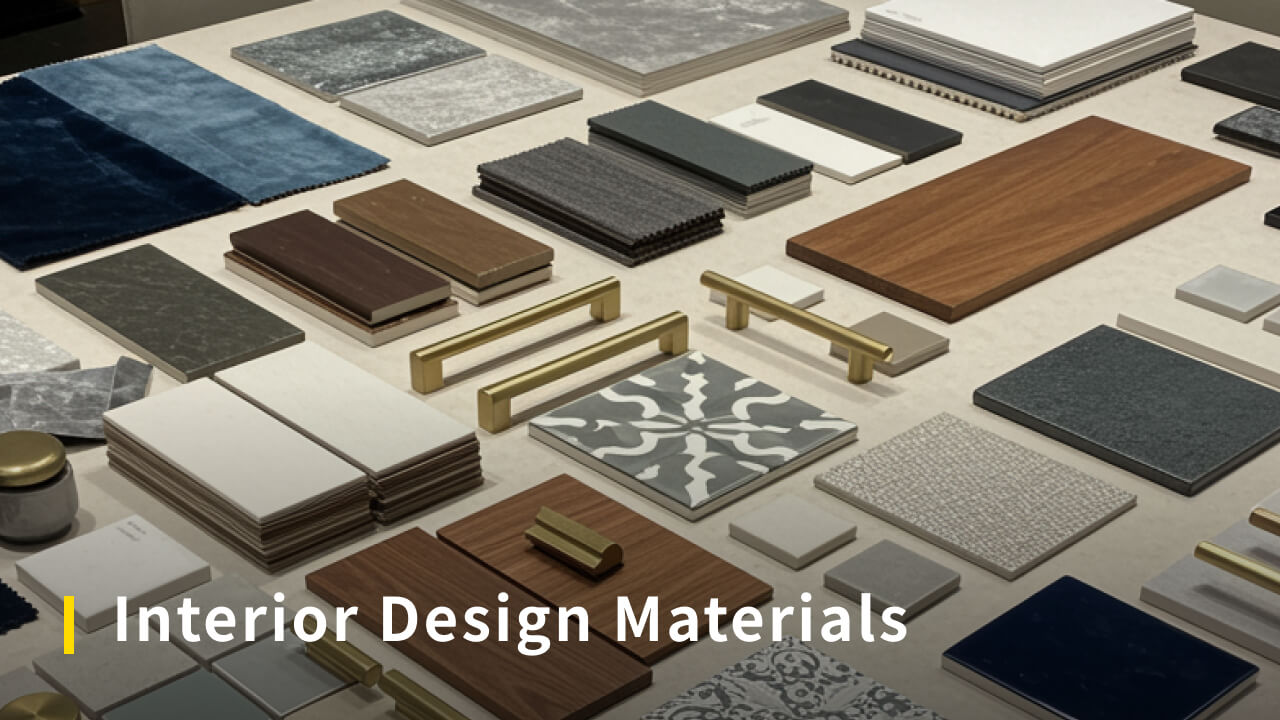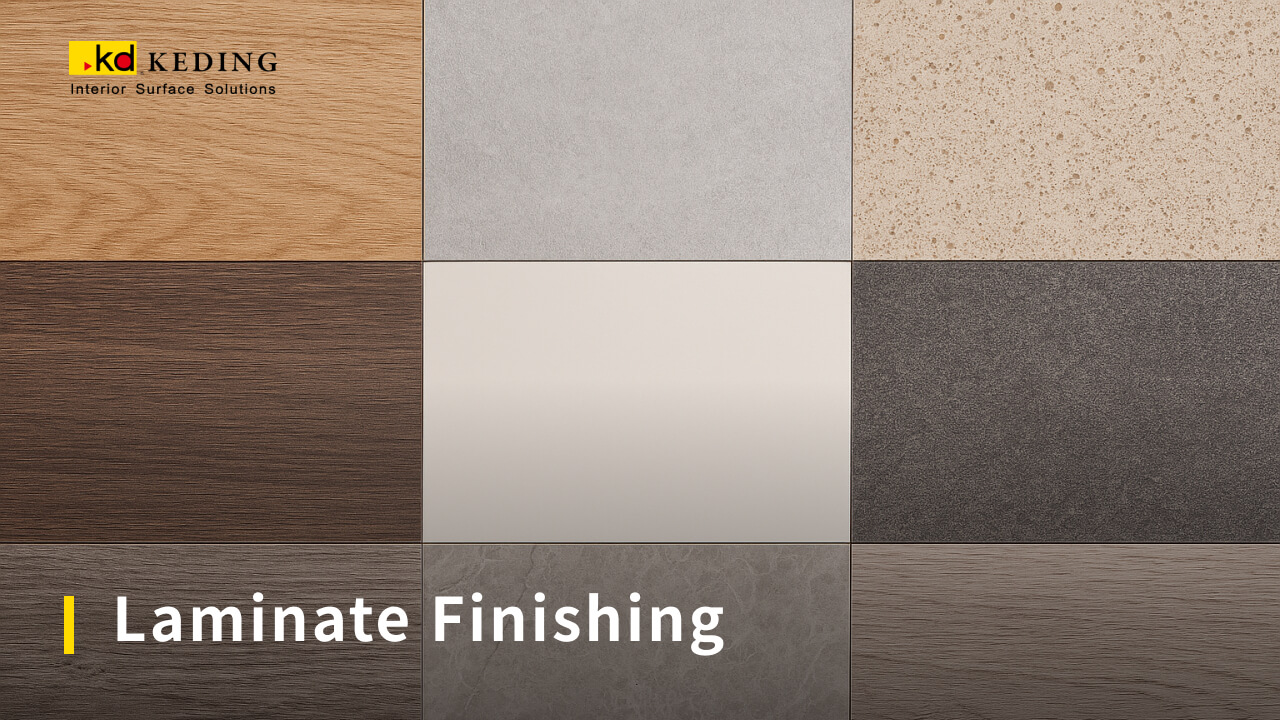1. What is a Melamine Board?
A melamine board is an engineered wood product commonly used in furniture and cabinetry. The core of the board is typically made from particleboard, MDF (medium-density fiberboard), or plywood, which is then coated with a melamine sheet. Melamine, a type of plastic resin laminate material, is derived from molding a combination of melamine and formaldehyde together via polymerization into a hard and durable plastic sheet under pressure.
The manufacturing process of melamine boards involves impregnating paper with melamine resin, which is then bonded under heat and pressure to the surface of the wood core. This process creates a hard, durable, and scratch-resistant surface that can mimic the appearance of wood or other materials. Melamine boards are popular for their affordability, ease of cleaning, and wide range of design options.
Applications of Melamine Boards
Melamine boards are versatile solutions widely applied in interior design, particularly in wall decoration. With a diverse range of colors and textures, melamine wall panels effortlessly mimic natural materials, offering creative flexibility. Whether used as accents or full coverings, melamine panels enhance aesthetics while resisting moisture, making them perfect for cabinetries in areas like bathrooms or kitchens. Their durability and sleek finish make them essential for furniture, cabinetry, shelving, office counters, whiteboards, and flooring applications.
2. Advantages of Melamine Boards
Design Options
Melamine boards offer extensive design possibilities, available in various colors, patterns, and textures. The melamine wall panels can replicate the appearance of wood grains, solid colors, metals, stones, tiles, and other decorative materials. Recent advancements even include options that mimic leather, woven fabrics, and velvet melamine finishes. This variety allows you to create distinctive and stylish living spaces without the need for additional painting or special maintenance.
Durability
Renowned for their durability, melamine boards are scratch-resistant, waterproof, stain-resistant, and easy to clean. They can endure high temperatures and resist minor damage, making them perfect for high-traffic areas like kitchens and commercial spaces. The protective melamine coating also shields against weak acids and alkalis, ensuring long-lasting performance and easy upkeep. Additionally, compared to solid materials, the care for melamine boards is simple, requiring no extra maintenance work.
Budget-Friendly
Melamine boards are an economical choice that doesn’t compromise on quality or durability. Moreover, they save time and money during application since there’s no need for sanding or finishing, unlike with solid wood.
Ease of Installation
Working with and installing melamine boards is relatively straightforward. They can be easily cut, drilled, and shaped using standard woodworking tools. Cutting melamine is hassle-free with the right equipment, such as a saw with a scoring unit or CNC routers, which help to minimize chipping.
3. Disadvantages of Melamine Boards
Water Vulnerability
While the melamine surface itself is waterproof, if water seeps into the particleboard substrate beneath the wood melamine board, it can lead to potential warping and damage to the melamine surface.
Not Resistant to Strong Acids/Alkalis
Direct exposure to potent acidic or alkaline detergents can permanently scorch the surface of melamine boards. To safeguard against such damage, it’s recommended to dilute strong detergents before application.
Seam Challenges
Due to their inability to bend at sharp angles, melamine boards often have unfinished visible seams at corners, which can be challenging to smooth out. This can be particularly problematic in areas prone to water exposure, requiring extra precautions during installation and maintenance.
4. Melamine Boards Comparison vs Other Products
As people shift from using solid wood for interior applications like furniture and cabinetry, other common engineered wood products such as melamine boards, particle boards, MDF, and plywood have become increasingly popular alternatives. Each material offers unique advantages and disadvantages, catering to different needs in terms of durability, cost, and aesthetics.
Melamine Board vs Plywood
Plywood is a versatile and robust material composed of multiple layers of thin wood veneers glued together. The grain direction of each veneer layer is perpendicular to the adjacent layers, creating a cross-laminated structure that provides uniform strength and stability. This process involves bonding the layers with moisture-resistant adhesives like phenol-formaldehyde resin and pressing them under heat and pressure. Plywood is widely used in flooring, roofing, furniture, wall paneling, and kitchen cabinets due to its durability and natural aesthetics. Its natural grain pattern and appearance make it an attractive choice for many applications, and it can be left unfinished or treated with stains and finishes to enhance its beauty.
Compared to melamine boards, plywood offers several advantages. Its structural integrity and strength are superior due to the cross-laminated construction, allowing it to withstand heavy loads and resist warping. Plywood is also available in various thicknesses and grades, making it a versatile choice for different projects. Unlike melamine, plywood is repairable and can be sanded, patched, and refinished, making it easier to maintain and restore. However, plywood tends to be more expensive than melamine boards and requires more careful handling, especially at the edges, to prevent splitting.
Melamine Board vs Particle Board
Particle board, also called chipboard or low-density fiberboard, is a type of engineered wood made by combining wood chips with synthetic resin or other binding materials. These ingredients are then pressed and formed into boards. It is commonly used in furniture, wall paneling, and flooring. Despite being the weakest among fiberboards, particle board offers several advantages: it is the most affordable fiberboard. It has a smooth finish and comes in various types, and some options are formaldehyde-free, addressing health concerns. Finally, it is lightweight and has a better screw-holding capacity.
However, particleboard has significant drawbacks when compared to melamine boards. It deforms easily when exposed to water and lacks the durability required for heavy loads. Melamine boards, on the other hand, are coated with a durable, moisture-resistant melamine sheet, making them more suitable for humid environments like kitchens and bathrooms. They also offer greater strength and a wider range of design options, including various colors and textures, providing more aesthetic flexibility. While particleboard is cost-effective, melamine boards deliver superior performance and longevity, making them a better choice for high-use areas.
Melamine Board vs MDF
MDF, or Medium-Density Fiberboard, undergoes a unique production process where wood particles are broken down into fibers and combined with resin and wax, forming sturdy panels under high pressure and temperature. Its notable features include a smooth surface suitable for painting, screwing, and gluing, consistent strength and stability, and its role as an ideal substrate for veneer work. It is often coated with paint or covered with a veneer to achieve the desired look. However, it’s important to address safety concerns regarding its weight and the presence of formaldehyde, requiring precautions like wearing a mask during cutting and sanding and ensuring proper ventilation during installation for MDFs.
In contrast, melamine provides a glossy, durable finish and comes in a variety of patterns and textures. This enhances both the aesthetic and functional aspects of end products, making it superior to MDF for interior design applications. While melamine may emit Volatile Organic Compounds (VOCs), posing potential health risks, its production does not involve cutting down trees, contributing to forest conservation. On the other hand, MDF promotes tree conservation by utilizing wood residuals, but its formaldehyde content raises environmental and health concerns.
5. Melamine Board vs KD ECO⁺ Laminates
Made from non-toxic food-grade PP material, KD ECO⁺ Laminates are free of formaldehyde and harmful substances, ensuring a safe and high-quality choice for both residential and commercial spaces. With over 200 color options, our laminate collections allow for the creation of unique interior styles, suitable for walls, doors, cabinets, flooring, etc. They are scratch, chemical, and stain-resistant, thanks to our exclusive SGS-certified coating, and offer easy maintenance, simple installation, and flexibility for curved areas with no length limitations.
Compared to melamine boards, KD ECO⁺ Laminates offer superior benefits. They provide flame-retardant properties for added protection against potential fire hazards, and their seamless color cores eliminate unpleasant black edges at 90-degree corners, enhancing the aesthetic appeal. Unlike melamine boards, which can be prone to chipping and difficult to install, KD ECO⁺ Laminates are easy to bend and cut, streamlining the installation process. Their resistance to solvents, alcohol, and dirt, combined with the ability to clean easily with a damp cloth, makes them a more practical and durable choice, outshining melamine boards in both functionality and style.
6. Keding – Your Best Laminates Supplier in Singapore
Explore Keding’s top-tier laminate solutions, offering unparalleled advantages over melamine boards. With a commitment to eco-friendliness and health-conscious materials, our laminates guarantee unmatched quality and innovation for all your projects. Opt for our ECO⁺ laminates instead of choosing melamine boards for the ultimate solution in durability and style.
Choose Keding, the foremost laminate brand in Singapore, to elevate your spaces with premium products. Contact us today or click below to explore ECO⁺ laminate collections for endless inspiration and unleash your design potential!
Relative Reads
>> Laminates for Kitchen Cabinets: Types, Benefits & Design Ideas – Keding
>> Why Use Laminates on Walls & Design Ideas for Wall Laminates – Keding
>> What is High-Pressure Laminates (HPL): Benefits & Applications – Keding
>> What is Wood Veneer: Benefits, Uses, Types & How to Choose – Keding




